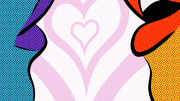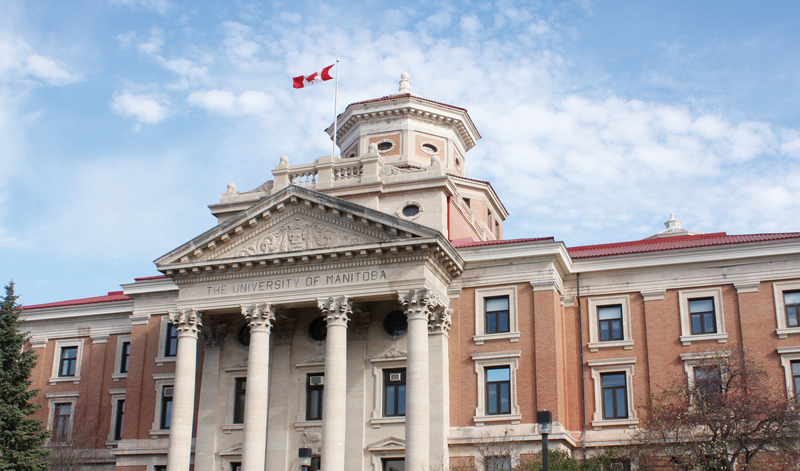Growing up, I was never taught anything about sexual orientation or gender identity. I had to figure that all out on my own.
Everyone sees gender and sexuality differently. What being a girl or being queer means to me could have a whole other meaning to someone else. We have no idea what other people are thinking and feeling, so why do we like to pretend that we do?
I know that when people live in a heteronormative society, it’s hard to understand what people, especially kids, in the 2SLGBTQIA+ community are going through in school. When going to school, the only thing that students should be worried about is the test they have in the second period, not the violent and discriminatory environment caused by misinformation and bigotry.
Sexual orientation and gender identity (SOGI) is a topic British Columbia and Alberta are introducing into lesson plans. By including SOGI into lesson plans, schools are ensuring that all students, queer or not, are included and learning is diversified.
The SOGI website states that 62 per cent of students in the 2SLGBTQIA+ community feel unsafe at school. And it’s not just the students feeling the problem. 64 per cent of bachelor of education graduates are unprepared to discuss SOGI with their students.
There is a stigma around the idea of using preferred pronouns or names at school in apprehension of the backlash from parents. But the more we continue to restrict 2SLGBTQIA+ youth, the more they will feel they cannot be themselves and the more they will feel like they do not belong.
The rate of suicide for 2SLGBTQIA+ youth is exponentially higher than for their cis-heterosexual peers. The Canadian Medical Association Journal published a survey showing that 64 per cent of participants who were transgender or gender non-conforming reported having seriously thought about suicide in the past 12 months. Studies report that 2SLGBTQIA+ youth are three and a half times more likely to attempt suicide than their cis-heterosexual peers. This doesn’t sound like we are protecting children.
The “1 Million March 4 Children” led by parents and community members on Sept. 20, 2023 was blatantly anti-queer and anti-trans, and all-around harmful to everyone. A flurry of news coverage and 2SLGBTQIA+ allies emerged overnight to combat the claims of “indoctrination” that the anti-queer protesters were voicing, without really knowing what the word means.
An anti-queer protester, Carol McGann, told the CBC, “What I am against is children being indoctrinated, children making decisions and choices based on an adult coming into […] a school system.” This protester was raising concerns about teens seeking hormone replacement therapy and gender affirming surgery “before being mature enough.”
Former Manitoba premier and leader of the Progressive Conservative party Heather Stefanson said “Parents know what’s best, in the best interest of their kids, but that will all be part of the consultation process.”
These particular statements are not only misinformed, but extremely harmful. There is a difference between kids being indoctrinated and kids being educated and taught how to treat each other with dignity and respect, regardless of such differences.
When SOGI is taught in school, it is about both 2SLGBTQIA+ students and cis-heterosexual students. SOGI-inclusive lessons validate the queer experience without erasing the straight experience. This ensures that everyone is represented and knowledgeable of others’ experiences.
Learning about the heterosexual experience was really hard for me because I didn’t relate. I didn’t understand and it took me a long time to figure myself out. If lessons are more inclusive, then the confusion and frustration gets minimized. Students are more understanding of one another, and that is paving the way for future generations to eliminate homophobia.
Stefanson’s statement that “parents know what’s best” is simply untrue. If parents truly knew what was best, they would not be so ignorant to the rules and processes that come with transitioning.
When trans teens specifically are entering the process of transitioning, they might cut or grow out their hair and alter their appearance in any way they can to quell their gender dysphoria. They may purchase a binder or binding tape which, when done correctly, is only meant to flatten the person’s chest. Alternatively, people might create or buy breast forms and bras to enhance their chest.
Eventually they might seek out professional care. This can include but is not limited to hormone replacement therapy. They can also go through gender affirming surgeries if they choose, such as chest procedures, genital reconstruction and other surgeries.
Learning SOGI in school can make this whole process a lot easier for everyone, not just for the people transitioning, but for their friends and family too. When you learn about the queer experience beforehand, it will be a lot easier to understand and empathize with queer people around you.
When I was 10, I came out to my friends as bisexual. Being queer was something that I think I knew from a very young age, but having a safe space to figure myself out without having to tell my parents right away was exactly what I needed at the time. Then, two years later when I was 12, I finally shared that information with my parents and family. But that was something that I needed to do myself. I needed those two years to prepare myself and to attempt to find myself. I’m still on that journey.
There is no way to safely force someone to come out, it’s only harmful. Everyone has the right to come out when they feel safe and ready. SOGI, in the long run, will ideally teach everyone that sexuality and gender are things that shouldn’t be shamed. Wherever you are on the gender and sexuality spectrums, you deserve to be treated with respect and compassion. I hope that Manitoba will follow suit and adopt SOGI so we can create a safer environment for Manitoban youth.
I still don’t know what my exact sexuality is and that’s okay. Labels can be very confusing. I was taking my time and getting ready to unveil my identity. It wasn’t easy, even when I grew up in a home environment and had a friend group where everyone was accepted.
I encourage everyone to take a step back and stop having selfish ideas about other people’s lives. If being queer is not a part of your journey, that’s okay. But don’t take someone else’s chance to find their identity away because of that.





